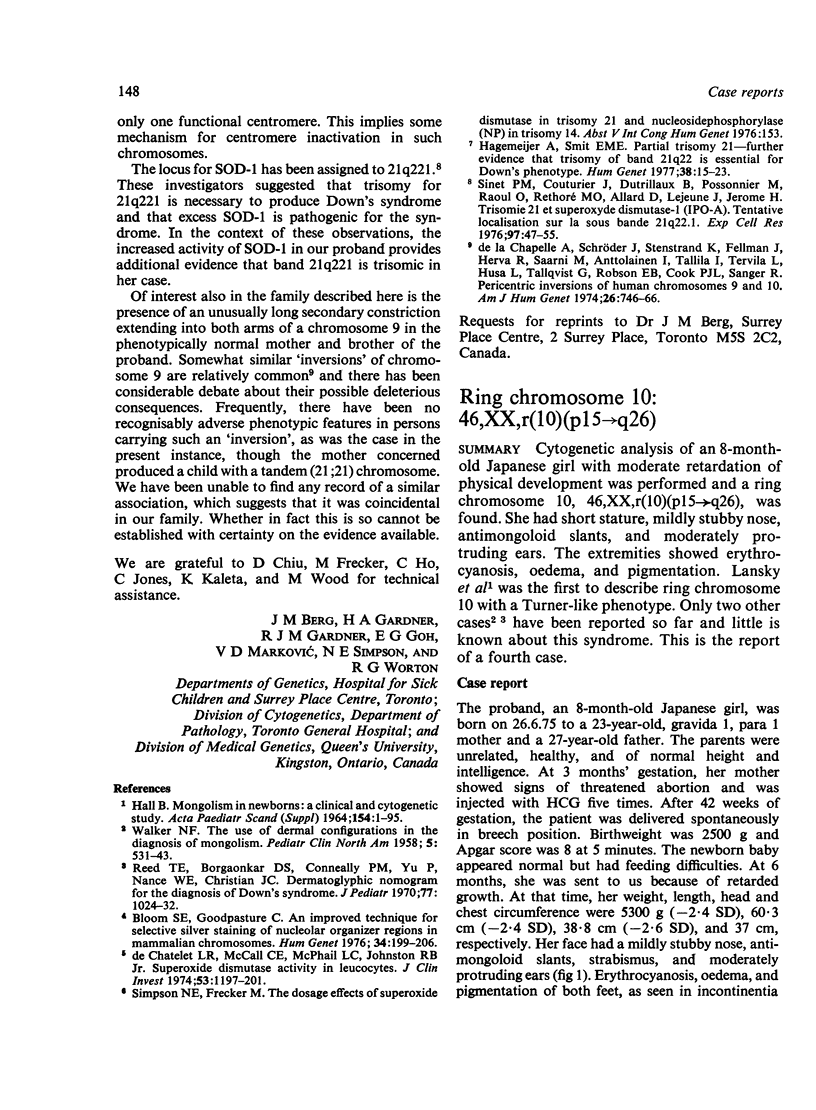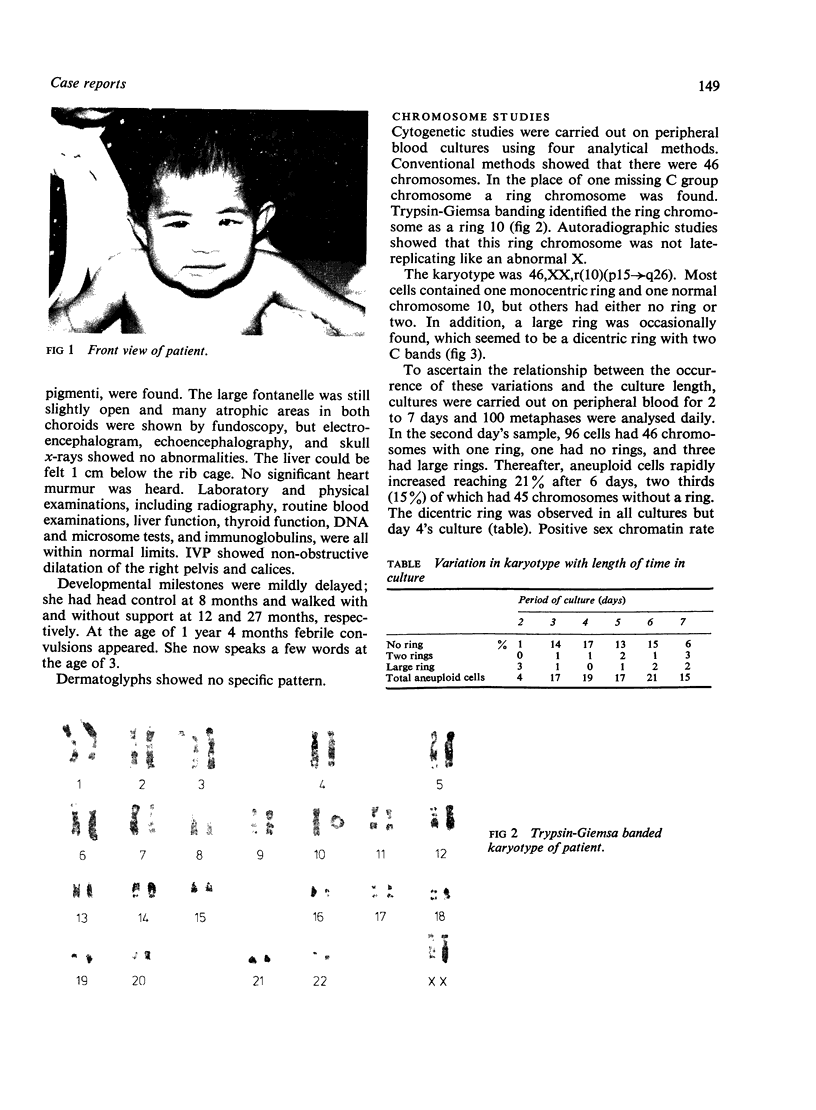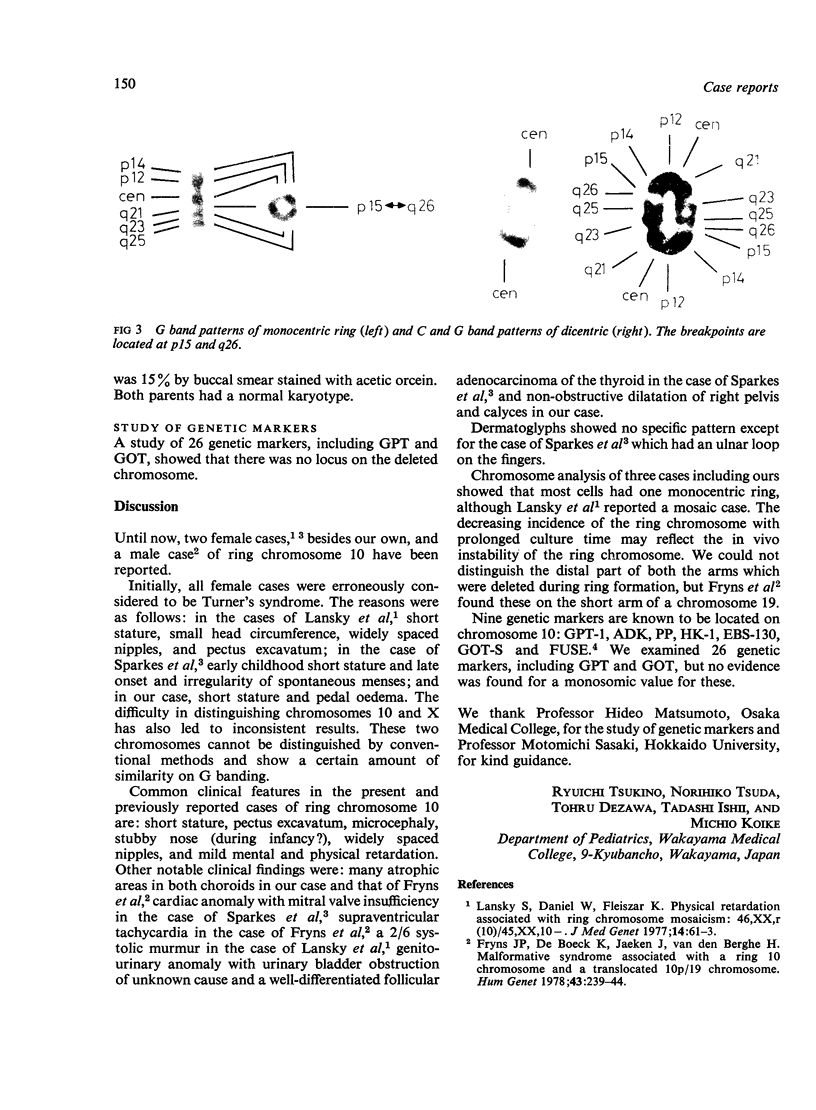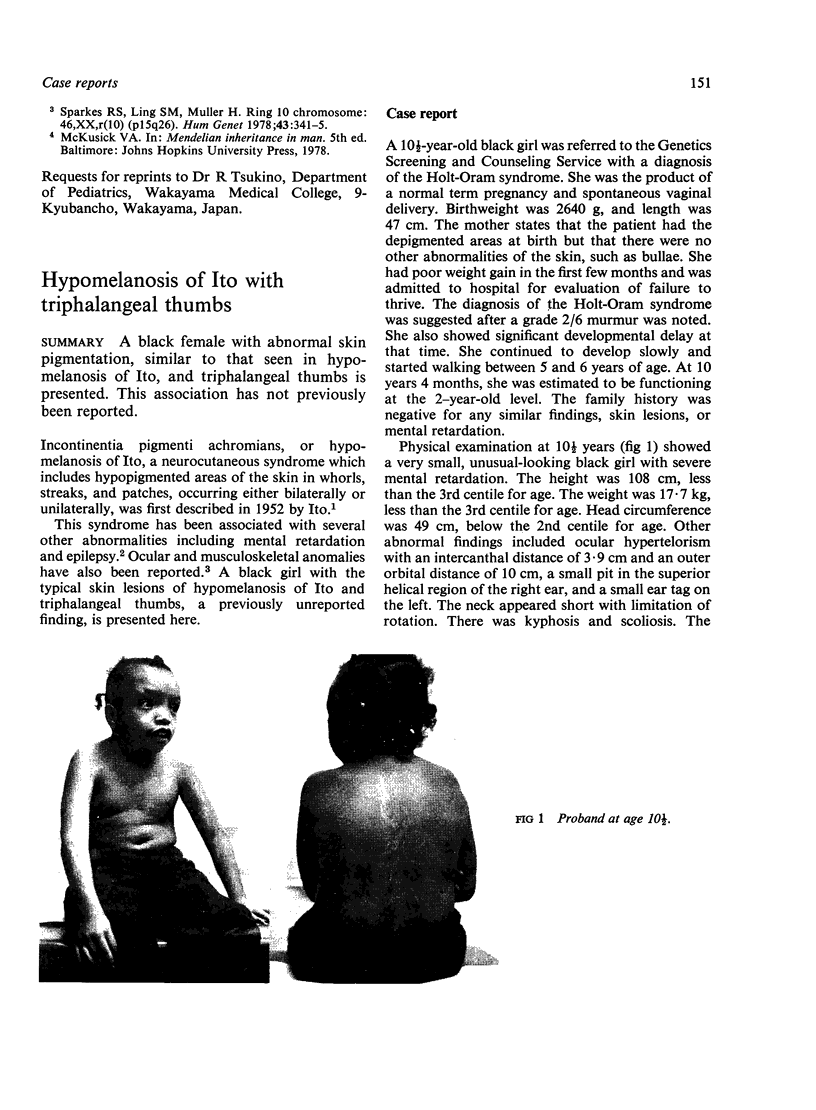Abstract
Cytogenetic analysis of an 8-month-old Japanese girl with moderate retardation of physical development was performed and a ring chromosome 10, 46,XX,r(10)(p15→q26), was found. She had short stature, mildly stubby nose, antimongoloid slants, and moderately protruding ears. The extremities showed erythrocyanosis, oedema, and pigmentation. Lansky et al1 was the first to describe ring chromosome 10 with a Turner-like phenotype. Only two other cases2 3 have been reported so far and little is known about this syndrome. This is the report of a fourth case.
Full text
PDF



Images in this article
Selected References
These references are in PubMed. This may not be the complete list of references from this article.
- Fryns J. P., De Boeck K., Jaeken J., van den Berghe H. Malformative syndrome associated with a ring 10 chromosome and a translocated 10q/19 chromosome. Hum Genet. 1978 Aug 31;43(2):239–244. doi: 10.1007/BF00293602. [DOI] [PubMed] [Google Scholar]
- Lansky S., Daniel W., Fleiszar K. Physical retardation is associated with ring chromosome mosaicism: 46, XX,r(10)/45, XX,10 minus. J Med Genet. 1977 Feb;14(1):61–63. doi: 10.1136/jmg.14.1.61. [DOI] [PMC free article] [PubMed] [Google Scholar]
- Sparkes R. S., Ling S. M., Muller H. Ring 10 chromosome: 46,XX,r10(p15q26). Hum Genet. 1978 Sep 19;43(3):341–345. doi: 10.1007/BF00278844. [DOI] [PubMed] [Google Scholar]






